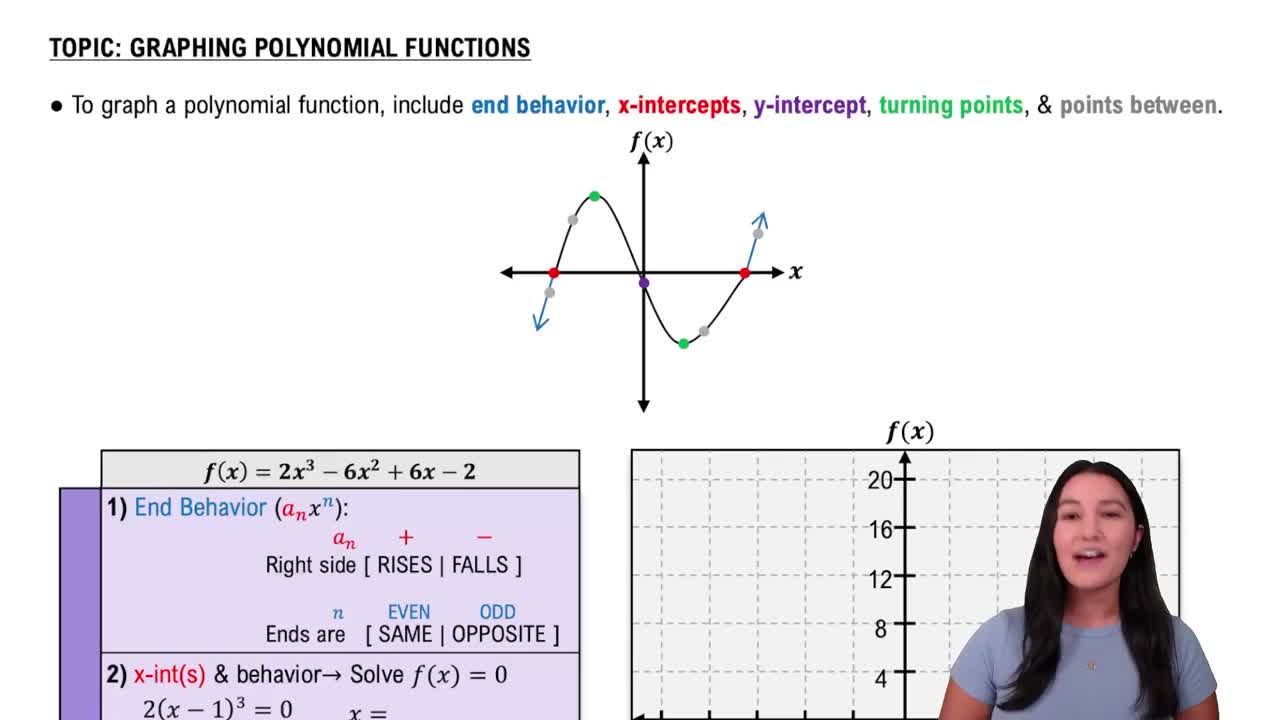Here are the essential concepts you must grasp in order to answer the question correctly.
End Behavior of Polynomials
The end behavior of a polynomial function describes how the function behaves as the input values (x) approach positive or negative infinity. This behavior is primarily determined by the leading term of the polynomial, which is the term with the highest degree. For example, in the polynomial f(x) = -x^3 - 4x^2 + 2x - 1, the leading term is -x^3, indicating that as x approaches infinity, f(x) will approach negative infinity, and as x approaches negative infinity, f(x) will also approach positive infinity.
Recommended video:
End Behavior of Polynomial Functions
Leading Coefficient Test
The leading coefficient test helps predict the end behavior of a polynomial function based on the sign and degree of the leading term. If the leading coefficient is positive and the degree is even, the ends of the graph will rise in both directions. Conversely, if the leading coefficient is negative and the degree is odd, like in the case of f(x) = -x^3, the graph will fall to the right and rise to the left, shaping the overall behavior of the polynomial.
Recommended video:
End Behavior of Polynomial Functions
Graphing Polynomial Functions
Graphing polynomial functions involves plotting points based on the function's values and understanding its shape, which is influenced by its degree and leading coefficient. The graph can exhibit various features such as intercepts, turning points, and asymptotic behavior. For the polynomial f(x) = -x^3 - 4x^2 + 2x - 1, recognizing its end behavior and critical points will aid in sketching an accurate representation of the function.
Recommended video:
Graphing Polynomial Functions
 Verified step by step guidance
Verified step by step guidance Verified video answer for a similar problem:
Verified video answer for a similar problem:



 6:04m
6:04m